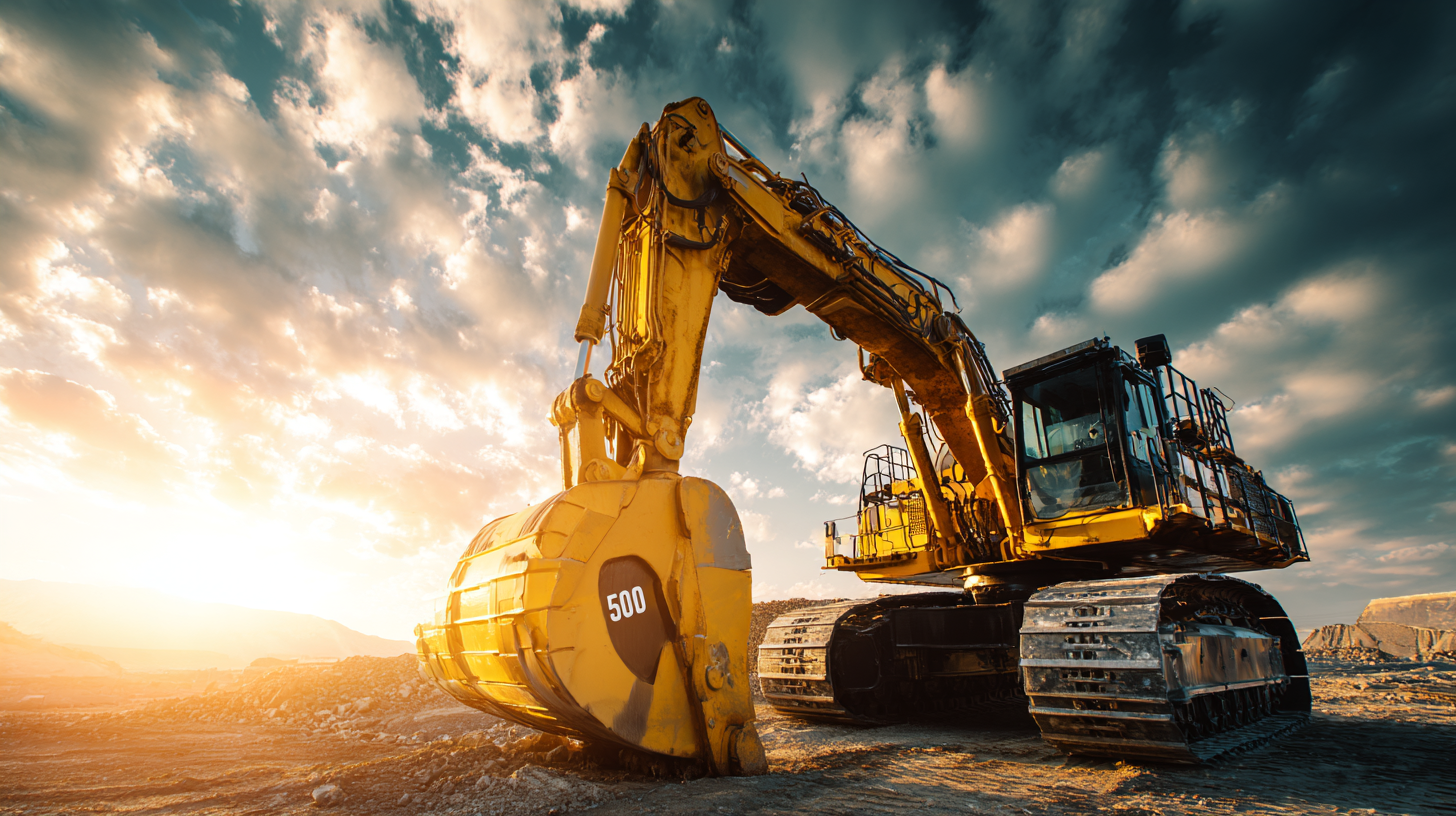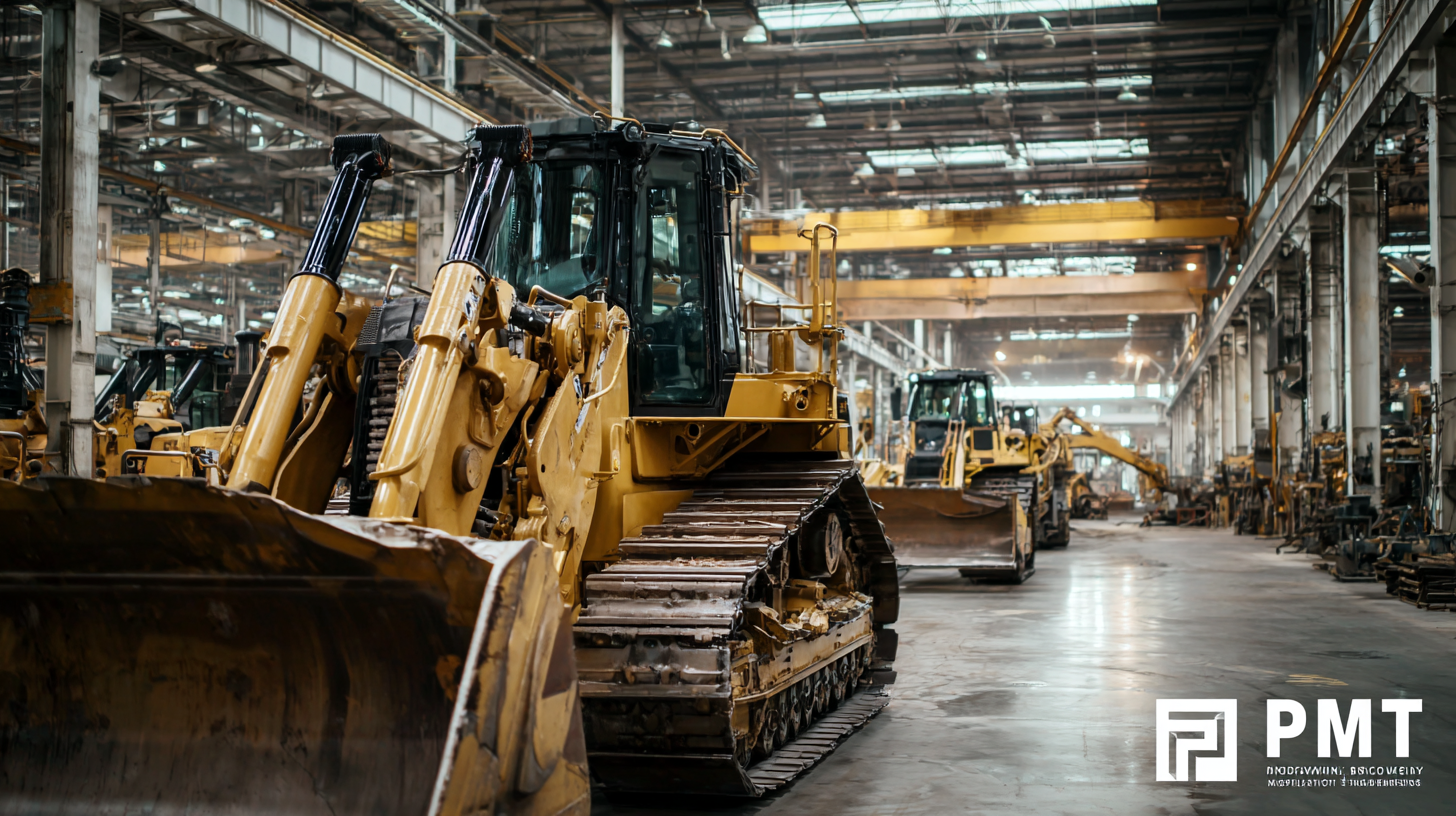Blog
Embracing 2025 Tech Trends: Best Heavy Machinery Strategies for Future-Proofing Your Business
As we approach 2025, the heavy machinery industry stands on the brink of a technological transformation that promises to reshape how businesses operate and thrive. Embracing these upcoming tech trends is crucial for companies aiming to future-proof their operations in a rapidly changing marketplace. With concepts like automation, artificial intelligence, and smart manufacturing gaining traction, it's imperative for heavy machinery businesses to integrate innovative strategies that align with these advancements.

Furthermore, the rise of "中国智造,全球热销,品质保证" emphasizes the importance of quality and global competitiveness. By harnessing these technologies, heavy machinery firms can enhance productivity, reduce costs, and improve overall efficiency, ensuring they remain leaders in an ever-evolving industry landscape. In this blog, we will explore the best practices for leveraging these trends to not only survive but thrive in the future of heavy machinery.
Analyzing 2025 Heavy Machinery Market Projections and Trends
As we look toward 2025, the heavy machinery sector is poised for transformative advancements, shaped by technological innovation and evolving market demands. According to recent projections, an emphasis on automation and connectivity will be central to heavy machinery's future. Businesses that embrace smart technologies, such as IoT and AI, will gain a competitive edge by enhancing operational efficiency, reducing downtime, and ensuring precise monitoring of equipment performance. These trends indicate a shift away from traditional methods, steering companies towards smart machinery that not only optimizes productivity but also minimizes environmental impact.
Moreover, the growing emphasis on sustainability is reshaping purchasing decisions in the heavy machinery market. As industries face increasing pressure to reduce carbon footprints, manufacturers are developing eco-friendly equipment solutions. Trends reflecting this shift include the rise of electric machinery and hybrids, which promise lower emissions and operational costs. Companies must adapt to these changes by investing in greener technologies to align with industry standards and customer expectations. Ultimately, those who proactively integrate these advancements into their strategies will not only future-proof their businesses but also lead the way in fostering a more sustainable heavy machinery landscape.
Integrating Smart Technologies to Enhance Machinery Efficiency and Productivity
As we look towards 2025, the heavy machinery industry faces unprecedented opportunities driven by rapid technological advancements. Integrating smart technologies has become essential to enhance machinery efficiency and productivity. By embracing the Internet of Things (IoT), businesses can equip their machinery with sensors that provide real-time data on performance and maintenance needs. This not only helps in reducing downtime but also allows for predictive maintenance, ensuring that machines operate at peak efficiency.
Moreover, the incorporation of artificial intelligence (AI) into heavy machinery can enhance decision-making processes. AI algorithms can analyze data collected from connected machines, identifying patterns and optimizing operations in ways that were previously unimaginable. For instance, AI-driven systems can manage fleet operations, offering insights into fuel usage and operational efficiency, ultimately reducing costs and improving sustainability. Adopting these smart technologies will position businesses to thrive in a competitive landscape as they future-proof their operations and embrace a more data-driven approach.
Embracing 2025 Tech Trends: Best Heavy Machinery Strategies for Future-Proofing Your Business
| Technology | Description | Benefits | Implementation Status |
|---|---|---|---|
| IoT Sensors | Devices that monitor and collect data from machinery. | Increased efficiency, real-time monitoring, predictive maintenance. | In Progress |
| AI Analytics | Use of artificial intelligence to analyze operational data. | Enhanced decision-making, optimized processes, cost savings. | Planned |
| Autonomous Machinery | Self-operating machines that require minimal human intervention. | Increased productivity, reduced labor costs, enhanced safety. | Pilot Testing |
| Cloud Computing | Utilization of cloud services for data storage and processing. | Scalability, flexibility, collaborative analysis. | Implemented |
| Blockchain | Secure digital ledger technology for transactions and data integrity. | Improved security, transparency, traceability. | Exploratory |
Sustainability Practices in Heavy Machinery: Embracing Eco-Friendly Innovations
As the heavy machinery industry evolves, sustainability has become a crucial focus, driving companies to adopt eco-friendly innovations. According to the World Economic Forum, the construction sector is responsible for approximately 38% of global carbon emissions. This staggering statistic underscores the urgency for heavy machinery businesses to integrate sustainable practices into their operations. By investing in greener technologies, such as electric and hybrid machinery, companies can not only reduce their carbon footprint but also align with global efforts to combat climate change.
In addition to adopting cleaner machinery, sustainable practices also encompass efficient resource management. Reports from McKinsey indicate that the circular economy could unlock up to $4.5 trillion in economic benefits by 2030 for the construction industry. Incorporating strategies like equipment recycling and waste minimization can help heavy machinery firms not only save costs but also enhance their reputation among environmentally conscious stakeholders. As regulations tighten and the demand for greener solutions increases, heavy machinery companies that prioritize sustainability will be better positioned to thrive in the competitive landscape of 2025 and beyond.

Case Studies: Successful Implementation of IOT in Heavy Machinery
 The integration of IoT technologies in heavy machinery has demonstrated transformative impacts on operational efficiency and cost reduction. For instance, a McKinsey report predicts that IoT applications could contribute up to $2.8 trillion in economic value by 2025 across various sectors, including heavy machinery. Companies like Caterpillar have successfully implemented IoT solutions to enhance equipment diagnostics and predictive maintenance, resulting in a reported 30% reduction in unforeseen downtime. Such advancements not only improve productivity but also extend the lifecycle of high-value machinery assets.
The integration of IoT technologies in heavy machinery has demonstrated transformative impacts on operational efficiency and cost reduction. For instance, a McKinsey report predicts that IoT applications could contribute up to $2.8 trillion in economic value by 2025 across various sectors, including heavy machinery. Companies like Caterpillar have successfully implemented IoT solutions to enhance equipment diagnostics and predictive maintenance, resulting in a reported 30% reduction in unforeseen downtime. Such advancements not only improve productivity but also extend the lifecycle of high-value machinery assets.
Case studies illustrating successful IoT implementation are plentiful. A notable example can be seen in the construction sector, where companies utilizing IoT sensors to track equipment usage have improved asset utilization rates by up to 15%, according to a report from Deloitte. Additionally, remote monitoring systems provide real-time data, enabling companies to make informed decisions swiftly, thus ensuring minimal disruption to their operations. As the industry continues to embrace IoT, businesses that leverage these technologies will undoubtedly gain a competitive edge in an increasingly tech-driven market.
Leveraging Data Analytics for Predictive Maintenance and Operational Optimization
In today's rapidly evolving technological landscape, leveraging data analytics for predictive maintenance is not just a trend, but a necessity for heavy machinery businesses aiming to future-proof operations. By harnessing AI and advanced analytics, companies can significantly optimize their maintenance schedules, thereby reducing downtime and operational costs. With the development of sophisticated AI models, organizations can predict machinery failures before they happen, allowing for timely interventions that not only save costs but also enhance overall operational efficiency.
The integration of Internet of Things (IoT) devices into heavy machinery further amplifies the benefits of predictive maintenance. These connected devices provide real-time data on equipment performance, identifying patterns that can inform decision-making. By analyzing this data, businesses can fine-tune their operations and respond proactively to potential issues. As more enterprises adopt AI-driven strategies, the machinery sector stands to gain immensely by staying ahead of the curve, ensuring that they not only remain competitive but also contribute to sustainability efforts by minimizing waste and resource usage.
